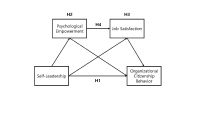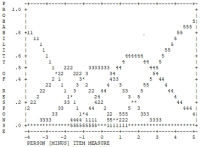
Purpose The purpose of this study is to classify the subjectivity of re-socialization barriers among retired footballers. Methods Q methodology was conducted to identify constraint factors contributing to social adjustment and reemployment perceived by 28 P-samples. Results Re-socialization barriers were classified as ‘Type I: Internal-constraint’, ‘Type II: External-constraint’, ‘Type III: Internal-conflict’, and ‘Type IV: External-conflict’. These types provided a variety of academic and practical discussions, depending on where the barriers are taken from (internal and external) and what depends on them (objective conditions and subjective ideas). Conclusions This study focused on the subjective structure of retired footballers and complemented traditional methodology focusing on hypothesis testing. Therefore, each type found in this study provides useful information not only in follow-up study on retired athletes, but also in policy-making decision such as support projects.



[Purpose] The purpose of this study is to draw practical implications applicable to the field through analysing serial multiple mediator model of self-leadership, psychology empowerment, job satisfaction and organizational citizenship behavior. [Methods] In order to achieve the purpose of this study, we surveyed Korea national league players(187 usable sample). Four hypotheses were tested using frequency analysis, exploratory factor analysis, reliability analysis, correlation analysis and PROCESS macro through SPSS statistics. [Results] The results are as follows. First, self-leadership has a significant effect on organizational citizenship behavior. Second, mediating effects of psychological empowerment between self-leadership and organizational citizenship behavior were significant. Third, mediating effects of job satisfaction between self-leadership and organizational citizenship behavior were significant. Fourth, serial multiple mediator effects leading to self-leadership→psychological empowerment→job satisfaction→organizational citizenship behavior were significant. [Conclusions] Korea national league players must perform self-leader, goal setting, self-observation, self criticism, constructive thinking strategies, dedication and voluntary attitude for clubs and colleagues. The team’s coaches should strive to praise the athletes for their pride, provide appropriate feedback, prevent job burnout, and the management of front office should make practical efforts such as improving the welfare environment and presenting the future vision of club.

The purpose of this study was to examine psychological capital acquisition through Asian Games Participation. 17 of national women football players were completed Psychological Capitals Questionnair. The psychological capital consists of optimism, psychological skills, self-management, collective efficacy, and performance perception was investigated after the team call-ups and before the team-release. The data was analyzed by paired t-test. As results, Korean women football players’ collective efficient and performance perception showed a statistical significance at the beginning of the team call-ups but optimism, psychological skills, and self-direction did not show statistic significances. The team-harmony, interpersonal-management, team-power, sufficient training, trust in coach, efficient communication, and psychological football factors, which were subfactor of football players’ psychological capital, showed statistical significances. However, confidence, concentration, goal-setting, imagery, willpower, anxiety-control, mental-management, life-management, training-management, innate-behavior management, physical-management, football skills, mediative skills, and football intelligence factors did not have statistic significances. These results demonstrate that effects of mega sporting events-like experiences and psychological factors’ variability and inflexibility according to weather changes should be considered when it comes to discussion of psychological factors regarding players’ performance. It is expected that this study would be a fundamental resource for understanding of psychological influences through participations in mega sporting events and discussions about further psychological interventions for teams with environmental consideration as well as methodological developments which could measure effects of the psychological interventions.
PURPOSE This study comprehensively compared the perception and interaction of player–coach in the development of mental toughness in soccer. METHODS Data were collected through semi-structured individual interviews from 12 participants (6 athletes and 6 coaches), analyzed using the grounded theory by Strauss and Corbin, and they were compared to the group of athletes and coaches, respectively. RESULTS The following results were obtained: (1) Both athletes and coaches recognized that the experience of coping with the pressure present in competition was a central phenomenon in the development of mental toughness. (2) Regarding the situation and condition that lead to coping with pressure, the athletes emphasized the individual's goal orientation in the context of competitive situations and environmental conditions, while the coaches emphasized the athletic attitude toward competition and development in childhood. (3) The athlete–coach interaction was identified as an intervening condition affecting the experience of coping with pressure. (4) As the action–reaction strategy for the development of mental toughness, the optimistic thinking was emphasized for athlete and achievement-oriented thinking for coach; thus, it differed in the characteristics of mental toughness. CONCLUSIONS This study presented the results of an integrated comparison of mental toughness, which can vary depending on the contextual specificity (soccer) and the subject of perception (athlete– coach), especially indicating the importance of the player–coach interaction, which can contribute to the strategy to be used in mental toughness development.

Purpose The purpose of this study was to determine item goodness-of-fit and the optimal categorization of an instrument measuring Korean elite young soccer player’s self-esteem using a two-facets Rasch model (item parameters and person parameters). Methods 10-item Rosenberg Self-Esteem Scale (RSES) with five response categories was administered to 366 elite young soccer players from the Korea football association. The Rasch analysis was conducted by WINSTEPS 3.65. Results First, the model fit the data well. Second, 5-category rating scale did function well. Third, a item-person map illustrated the distribution of RSES items and person’s level of self-esteem. Fourth, the separation reliability of the items and person was shown to be an acceptable degree of confidence, respectively. Lastly, there was statistically significant difference in self-esteem between starting players and bench players, which supported the known-difference evidence of validity. Conclusion These findings provided additional support for the suitability of the RSES in assessing self-esteem of Korean elite young soccer players.



PURPOSE This study aimed to present isokinetic quadriceps and hamstring muscle strength values in K league 1 (K1) professional soccer players and compare these results to those of published studies. METHODS A total of 31 K1 soccer players (age 24.5±4.2) without a history of lower limb injury were included in this study. Isokinetic knee strength tests were implemented at a velocity of 60°·s-1 and 180°·s-1 for both dominant (D) and non-dominant (ND) legs using a dynamometer. Strength variables included peak torque (PT), body mass normalized PT (NPT), bilateral strength difference (BD), and hamstring to quadriceps strength (H/Q) ratio. RESULTS At 60°·s-1 velocity, the NPTs of the quadriceps were 3.39N·m·kg-1 and 3.33N·m·kg-1 for D and ND legs, respectively, and those of the hamstrings were 2.00N·m·kg-1 and 1.89N·m·kg-1 for D and ND legs, respectively. At 180°·s-1 velocity, the NPTs of the quadriceps were 2.31N·m·kg-1, 2.27N·m·kg-1 for D and ND legs, respectively, and those of the hamstrings were 1.42N·m·kg-1, 1.39N·m·kg-1 for D and ND legs, respectively. At all velocities, the BDs of quadriceps and hamstring muscles ranged from 6.6–7.8%, and H/Qs ranged from 57–62%. Compared to previous studies that did not consider the history of injury, this study showed lower levels of BD (less than 10%) and higher levels of NPT. CONCLUSIONS The presented isokinetic quadriceps and hamstring muscle strength values can be used as reference values for the isokinetic knee strength of K1 professional soccer players.
PURPOSE The purpose of this study was to investigate the effects of perceived organizational support of high school football players on innovative performance. Of particular note, we focused on examining the mediation effect of self-management between perceived organizational support and innovative performance. METHODS A total of surveys returned was 137 and the data used for the final analysis was 130. The data was processed using SPSS 21.0 statistical program and Lisrel 9.2 for confirmatory factor analysis. RESULTS The results of the analysis were as follows: first, perceived organizational support of high school football players had a positive effect on players’ self-management. Second, players’ self-management had a positive effect on players’ innovative performance. Third, players’ self-management fully mediated between perceived organizational support and players’ innovative performance. CONCLUSIONS The study concluded that maximizing both perceived organizational support and self-management of the high school football players are necessary in order for the organization to achieve high level of innovative performance.
PURPOSE This study both validated the Characteristics of Resilience in Sports Teams Inventory (CREST) scale for use in Korean sports and analyzed the impact of team resilience on teamwork and performance. METHODS The study surveyed 462 elite football players by using the CREST scale to measure team resilience in Korean sports. Data were analyzed using descriptive statistics, exploratory factor analysis (EFA), reliability analysis, correlation analysis, multiple regression analysis, and confirmatory factor analysis (CFA). RESULTS First, results confirmed that the CREST scale’s two main factors—resilient characteristics and vulnerabilities under pressure—can be meaningfully applied in the Korean context. Second, resilient characteristics showed positive correlation with life skills, whereas vulnerabilities under pressure showed negative correlation. Third, resilient characteristics positively predicted life skills, whereas vulnerabilities under pressure negatively affected life skills. CONCLUSIONS The CREST scale was found reliable and valid in the Korean sports context, demonstrating that team resilience significantly impacts life skills. Thus, the study contributes to evaluation of resilience in Korean sports teams and provides strategicinsights to improve team performance.
This study aims to provide an in-depth study on K-League players' perception and preparation process on retirement. In order to achieve the purpose, data collection was conducted in two major ways; face-to-face interviews and questionnaires from 10 currently working players. The result of study is based on inductive analysis. First of all, sense of expectation and concern, limited scope of secondary job, and necessity for career education are appeared in terms of players' perception. Second, preparation process on retirement is concluded in two categories; personal development activities(non-professional and inefficiency) and financial preparation. Thirdly, difficulties in the procedures of retirement preparation are categorized into ‘limited time and isolated lifestyle caused by staying in club house ’ and ‘lack of educational programs regarding retirement’. Depending on the results of this study, opportunities confined to retired players are supposed to be enlarged to currently working players. In addition, football club and K-League federation need to support players not only to enhance performance but also to prepare retirement.
PURPOSE This study aimed to extract football coaches’ categories of performance evaluation factors (PEF) and examine the reflective characteristics of the football coaches’ player and casting judgments. METHODS PEF were extracted through an open-ended questionnaire and categorization from 80 AFC C or higher football coaches. Reflection was calculated in player and casting judgments through an analytic hierarchy process. The difference between the football coaches’ player and casting judgments was examined using SPSS 21.0. RESULTS First, the PEF of football coaches were categorized into four general categories: physical intelligence, psychological intelligence, growth potential, and competition intelligence. Second, the importance of football coaches’ player judgments were reflected by the PEF as football intelligence, situation judgment, football talent, tactical understanding, tactical operation, etc. The importance of the casting judgment were reflected by the PEF as tactical understanding, mediative skills, fitness, tactical operation, situation judgment, etc. Third, a statistically significant difference was noted between player and casting judgments. Football coaches tended to value growth potential and talent as sub-factors in the player evaluations. Football coaches’ PEF were aligned with the importance of player and casting judgments in psychological and competition intelligence as sub-factors such as skills, physical, attitude, passion, etc., but differed from physical intelligence and growth potential as sub-factors including mediative skills, physical, football talent, and tactical understanding. CONCLUSIONS In the football coaches’ player evaluations, the idealistic principle centered on growth potential. However, in the casting evaluation, the realistic principle centered on victory takes effect.